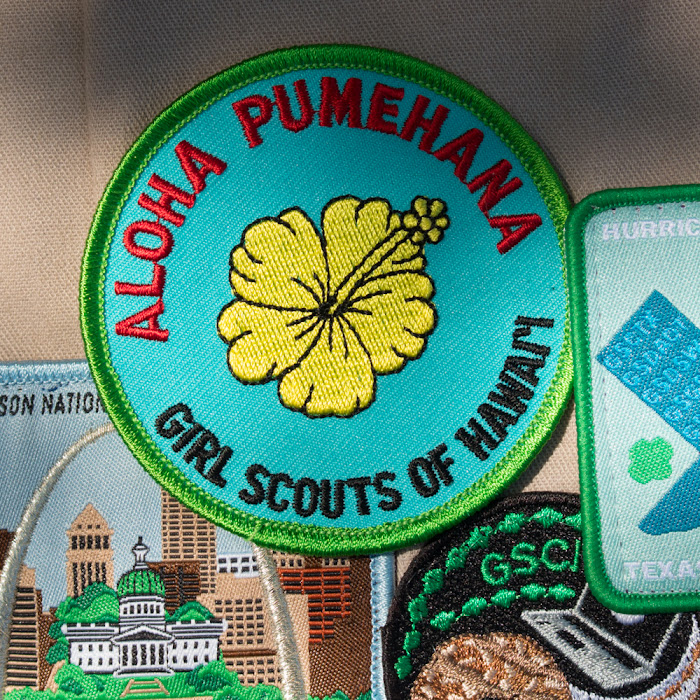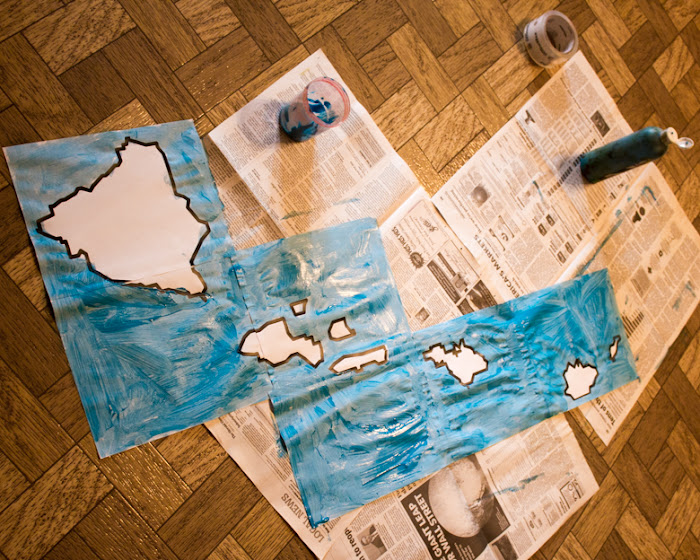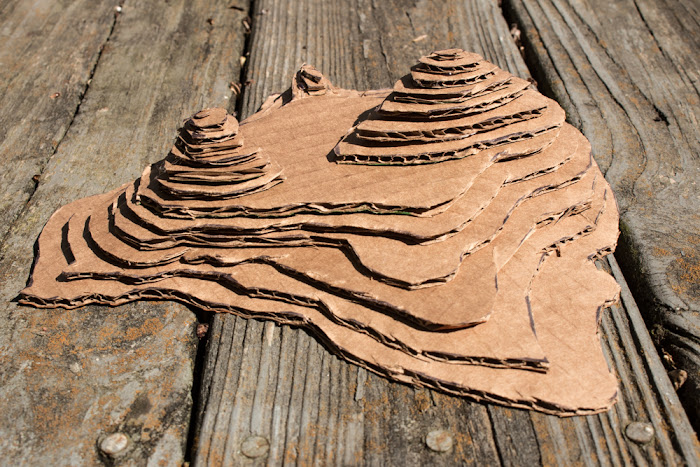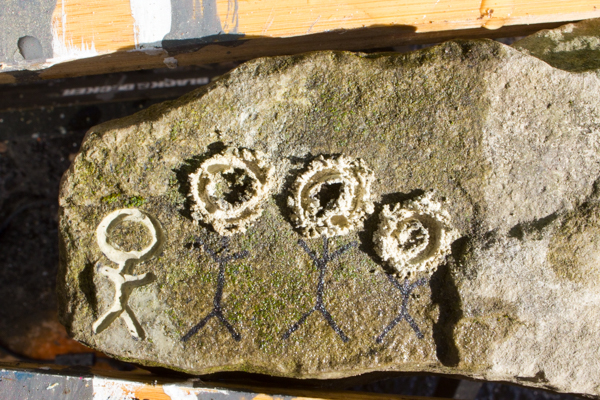I published my first round-up list of our unit study of Hawaii back in 2015. Last year (okay, we actually only finished it up a couple of weeks ago, but we STARTED it last year!), the kids and I accomplished another unit study of Hawaii, and it was just as fun with older kids doing more advanced work.
Instead of making two separate unit study write-ups, I went back and revised my 2015 blog post on our Hawaii study to reflect all of the new activities that more advanced students can do, and the specific areas of interest to older students.
This is that blog post!
This is an overall roundup of two different unit studies that the kids and I have worked through on the topic of Hawaii over the years. The first time we studied Hawaii was in preparation for our first visit there in 2015, when the kids were around the ages of nine and eleven.
The second time we studied Hawaii was in preparation for and after our second family visit to Hawaii, and specifically for the purpose of earning the Girl Scouts of Hawai'i Aloha fun patch. Earning the fun patch is really... well, fun!... but if your kids are older or have studied Hawaii before, then the requirements to earn it may not seem rigorous enough. I adjusted the requirements to be more rigorous and challenging while still fitting the eight themes that the patch program covers, which I'll tell you about below. You still want to follow along in the official patch program guide, because it contains valuable information written by the Girl Scouts of Hawaii to other Girl Scouts around the world, but you can substitute the actual activities.
Here we go, then!
1. Geography and Geology of Hawaii
A good beginning goal for a unit study is to memorize the location of Hawaii on a world map, to memorize the state symbols associated with Hawaii, and to understand the geology that has shaped it--and is continuing to shape it!
One of the larger geography activities in this section meets the Kaua'i requirement for the Aloha fun patch.
A. map of Hawaii
I printed out a giant map of Hawaii from Megamaps, and taped it together for the kids. They then painted the ocean and labeled the eight major islands:
I put their map on the wall and we used it for daily memory work to help the kids memorize the islands.
One of these volcanoes activities meets the Hawai'i requirement for the Aloha fun patch.
The kids watched BrainPop videos on volcanoes, earthquakes, and tsunami, taking the quizzes and completing the accompanying worksheets. Will and I used my DIY bendy yarn to mark the location of the Ring of Fire on our big world wall map, even though Hawaii's volcanoes are actually not due to the Ring of Fire.
We used these geography and geology resources:
2. Hawaiian culture
I knew that the kids were going to see some really inauthentic, touristy versions of Hawaiian culture on our trip, and that's fine, because those are iconic parts of a Hawaiian vacation, but I wanted the kids to also have an understanding of real Hawaiian culture and its value to the Hawaiian people.
The second time we studied Hawaii was in preparation for and after our second family visit to Hawaii, and specifically for the purpose of earning the Girl Scouts of Hawai'i Aloha fun patch. Earning the fun patch is really... well, fun!... but if your kids are older or have studied Hawaii before, then the requirements to earn it may not seem rigorous enough. I adjusted the requirements to be more rigorous and challenging while still fitting the eight themes that the patch program covers, which I'll tell you about below. You still want to follow along in the official patch program guide, because it contains valuable information written by the Girl Scouts of Hawaii to other Girl Scouts around the world, but you can substitute the actual activities.
Here we go, then!
1. Geography and Geology of Hawaii
A good beginning goal for a unit study is to memorize the location of Hawaii on a world map, to memorize the state symbols associated with Hawaii, and to understand the geology that has shaped it--and is continuing to shape it!
One of the larger geography activities in this section meets the Kaua'i requirement for the Aloha fun patch.
A. map of Hawaii
I printed out a giant map of Hawaii from Megamaps, and taped it together for the kids. They then painted the ocean and labeled the eight major islands:
I put their map on the wall and we used it for daily memory work to help the kids memorize the islands.
When the kids did this project again in 2019 (because yes, giant mapmaking is still fun for thirteen- and fourteen-year-olds!), they were able to complete it entirely independently, and with this list of instructions giving them further locations to map to research, identify, and label:
In both studies, when we read about any interesting geographical feature of Hawaii, or made plans to visit some place such as Ka Lae, the southernmost point of the United States, I had the kids mark and label that site on the map. I think it helped orient them somewhat during our visits.
In preparation for each visit to Hawaii, I had the children look through several guidebooks to see what they wanted to visit. They actually enjoyed this activity more, however, when we were in Hawaii--how fun to look through a guidebook, point to something, say, "I want to go there!", and have themagic tree house rental van take you there right then!
1. Label each island.
4. Label the ocean.
5. Label the following landmarks:
a. Volcanoes National Park
b. Hawaii’s state capital
c. Pearl Harbor
d. Pipeline
e. Mauna Kea
f. Mauna Loa
g. Princeville (our resort!)
h. Waimea Canyon
i. Ka Lae
j. Wailua River
k. Napali Coast
In both studies, when we read about any interesting geographical feature of Hawaii, or made plans to visit some place such as Ka Lae, the southernmost point of the United States, I had the kids mark and label that site on the map. I think it helped orient them somewhat during our visits.
In preparation for each visit to Hawaii, I had the children look through several guidebooks to see what they wanted to visit. They actually enjoyed this activity more, however, when we were in Hawaii--how fun to look through a guidebook, point to something, say, "I want to go there!", and have the
If you want to focus on the ocean around Hawaii, the Blue Planet episodes "Coral Reefs" and "Coral Seas" are fantastic. Here's an interesting and simple demonstration of salt water vs. fresh water.
B. Hawaii state symbols
I had the children memorize Hawaii's capital, and I printed this Hawaii state symbols coloring page for them to complete, although I had them research images of each of the symbols to get the colors correct, not just rely on the printed legend. And yes, we had to look up the pronunciation for many of the Hawaiian things that we studied! Here's how to pronounce the name of Hawaii's state bird.
In the process of this research, Will became very interested in the Hawaii state capitol building. We'd have gone to visit if it had been in session, because Will really wanted to see the representatives wearing Hawaiian shirts! The state capitol building's web site does have some activity books for children, although we didn't use them.
C. Volcanoes
The goal for this unit was to give the children a good working knowledge of the science and geology of volcanoes.
I had the children memorize Hawaii's capital, and I printed this Hawaii state symbols coloring page for them to complete, although I had them research images of each of the symbols to get the colors correct, not just rely on the printed legend. And yes, we had to look up the pronunciation for many of the Hawaiian things that we studied! Here's how to pronounce the name of Hawaii's state bird.
In the process of this research, Will became very interested in the Hawaii state capitol building. We'd have gone to visit if it had been in session, because Will really wanted to see the representatives wearing Hawaiian shirts! The state capitol building's web site does have some activity books for children, although we didn't use them.
C. Volcanoes
The goal for this unit was to give the children a good working knowledge of the science and geology of volcanoes.
One of these volcanoes activities meets the Hawai'i requirement for the Aloha fun patch.
The kids watched BrainPop videos on volcanoes, earthquakes, and tsunami, taking the quizzes and completing the accompanying worksheets. Will and I used my DIY bendy yarn to mark the location of the Ring of Fire on our big world wall map, even though Hawaii's volcanoes are actually not due to the Ring of Fire.
Our underwater volcano demonstration works particularly well, as this is how the Hawaiian islands were formed. You can also make a gelatin volcano to model how eruptions work. And if you've never made a baking soda and vinegar volcano before, now is the time!
To see real volcanic activity really in Hawaii, check out these volcano webcams.
To connect Hawaii's history of volcanoes to its particular geography, make a corrugated cardboard topographic map of the Big Island. Those mountains are volcanoes!
If kids are very interested in the process of Hawaii's formation, here's a much more detailed and sophisticated lesson.
To see real volcanic activity really in Hawaii, check out these volcano webcams.
To connect Hawaii's history of volcanoes to its particular geography, make a corrugated cardboard topographic map of the Big Island. Those mountains are volcanoes!
If kids are very interested in the process of Hawaii's formation, here's a much more detailed and sophisticated lesson.
We used these geography and geology resources:
2. Hawaiian culture
I knew that the kids were going to see some really inauthentic, touristy versions of Hawaiian culture on our trip, and that's fine, because those are iconic parts of a Hawaiian vacation, but I wanted the kids to also have an understanding of real Hawaiian culture and its value to the Hawaiian people.
If your kids are younger or like paper dolls, there's a Hawaii set in this cute collection. Might as well print all the dolls and explore all their cultures!
Here's a good place to start exploring Hawaii's myths and legends. Do more research on the specific ones that interest you.
A. Hawaiian language
It's important to understand that Hawaii has its own native language and native speakers of that language, especially because at one time native Hawaiians were actively dissuaded from participating in their own culture.
It's important to understand that Hawaii has its own native language and native speakers of that language, especially because at one time native Hawaiians were actively dissuaded from participating in their own culture.
One language activity meets the Ni'ihau requirement for the Aloha fun patch.
I wanted the kids to understand that Hawaii has its own native language, one that is still very much alive on the islands, and I also wanted the kids to have a go at learning some words and phrases. To that end, they both spent several weeks working daily through the first lessons in Mango Languages: Hawaiian. I won't go so far as to claim that they're in any way conversational, but it was an excellent way to get them to immerse themselves in Hawaiian writing and pronunciation. Here they are practicing!
There's a terrific YouTube channel dedicated to teaching the Hawaiian language. We watched all of their videos several times, including this one, our favorite:
B. Hawaiian music
It's fun to listen to traditional Hawaiian music, but don't forget the musical artists who are Hawaiian, no matter the genre they perform in. Music is also a good segue into studying other aspects of Hawaii's history and culture.
It's fun to listen to traditional Hawaiian music, but don't forget the musical artists who are Hawaiian, no matter the genre they perform in. Music is also a good segue into studying other aspects of Hawaii's history and culture.
One music activity meets the Kaho'olawe requirement of the Aloha fun patch.
I have a free account on Spotify, and I used it to let the kids listen to loads of Hawaiian music. Here's my Hawaii playlist with our favorite Hawaii-themed songs. This song, in particular, is the telling of the Hawaiian creation myth that we saw in the Bishop Museum.
If you want to make your own music, here's a great lesson on the 'ili'ile and how to use them. The ukulele is also an accessible and fairly affordable instrument. Syd was interested in learning, so I bought her this ukulele and this tuner, and off she went!
C. Hawaiian dance
To begin a study on hula, we found this intro video to be helpful. We then spent most of one morning watching YouTube videos from the Merrie Monarch festival, the world's premier hula dancing competition. Make sure that you watch performances by both women's groups and men's groups! We also did these hula tutorial videos together, and although Syd, surprisingly, did NOT enjoy them and in fact left the room in a strop, Will, surprisingly, LOVED them and happily danced along with me. This was actually really great, because there was a hula tutorial at our luau in Hawaii, and Will happily jumped right in, with the background knowledge that she likes doing the hula! If you're not planning to visit Hawaii, an excellent enrichment activity would be having the kids help plan an at-home luau, complete with roasted pork and hula dancing.
To begin a study on hula, we found this intro video to be helpful. We then spent most of one morning watching YouTube videos from the Merrie Monarch festival, the world's premier hula dancing competition. Make sure that you watch performances by both women's groups and men's groups! We also did these hula tutorial videos together, and although Syd, surprisingly, did NOT enjoy them and in fact left the room in a strop, Will, surprisingly, LOVED them and happily danced along with me. This was actually really great, because there was a hula tutorial at our luau in Hawaii, and Will happily jumped right in, with the background knowledge that she likes doing the hula! If you're not planning to visit Hawaii, an excellent enrichment activity would be having the kids help plan an at-home luau, complete with roasted pork and hula dancing.
D. traditional foods of Hawaii
Hawaii has a fascinating food culture, not just of traditional dishes but also of dishes influenced by its immigrant cultures, by the crops grown by colonizing forces, and by foods eaten during wartime scarcity.
Hawaii has a fascinating food culture, not just of traditional dishes but also of dishes influenced by its immigrant cultures, by the crops grown by colonizing forces, and by foods eaten during wartime scarcity.
One traditional foods activity meets the Lana'i requirement for the Aloha fun patch.
Whether or not you get to actually go to Hawaii and eat the real deal--sushi! Spam! shave ice!--making at-home versions is really fun. You could make sushi, play with recipes that include Spam, learn about macaroni salad, or make your own shave ice. Do NOT forget the snow cap!
Kona Coffee is a huge deal on the Big Island. We toured Greenwell Farms during our trip, and I highly recommend it, but their website also has some great educational videos on coffee farming. Good enrichment activities for that would be teaching the kids how to grind coffee beans and make you a delicious cup of coffee, or baking a coffee cake or another treat that includes coffee as an ingredient.
The Aloha fun patch guide has instructions for hosting a luau, including recipes for what to serve. We did this for a family dinner one night and had a delicious time eating crock pot Kalua pork, haupia, and coconut cake.
Kona Coffee is a huge deal on the Big Island. We toured Greenwell Farms during our trip, and I highly recommend it, but their website also has some great educational videos on coffee farming. Good enrichment activities for that would be teaching the kids how to grind coffee beans and make you a delicious cup of coffee, or baking a coffee cake or another treat that includes coffee as an ingredient.
The Aloha fun patch guide has instructions for hosting a luau, including recipes for what to serve. We did this for a family dinner one night and had a delicious time eating crock pot Kalua pork, haupia, and coconut cake.
E. sports and games
Surfing is an important part of Hawaii's history and culture, but there are other games historically played in Hawaii that are also fun to experience.
One sports and games activity meets the O'ahu requirement for the Aloha fun patch.
Syd, in particular, got really into watching big wave surfing videos on YouTube.
We learned how to play two traditional games of Hawaii, konane and lu-lu. If your kids love math, you can use lu-lu to practice creating probability trees!
We used these additional resources to study Hawaii's culture:
2. Hawaiian history
The goals for this unit were to understand that Hawaii has a vast pre-colonial history, to understand that it was colonized and its sovereign government overthrown by the United States, and to understand its iconic role in World War 2.
2. Hawaiian history
The goals for this unit were to understand that Hawaii has a vast pre-colonial history, to understand that it was colonized and its sovereign government overthrown by the United States, and to understand its iconic role in World War 2.
There's a terrific timeline of Hawaiian history in the Aloha fun patch book. The kids used it for a research project in which they picked one event to learn more about and teach to the rest of us.
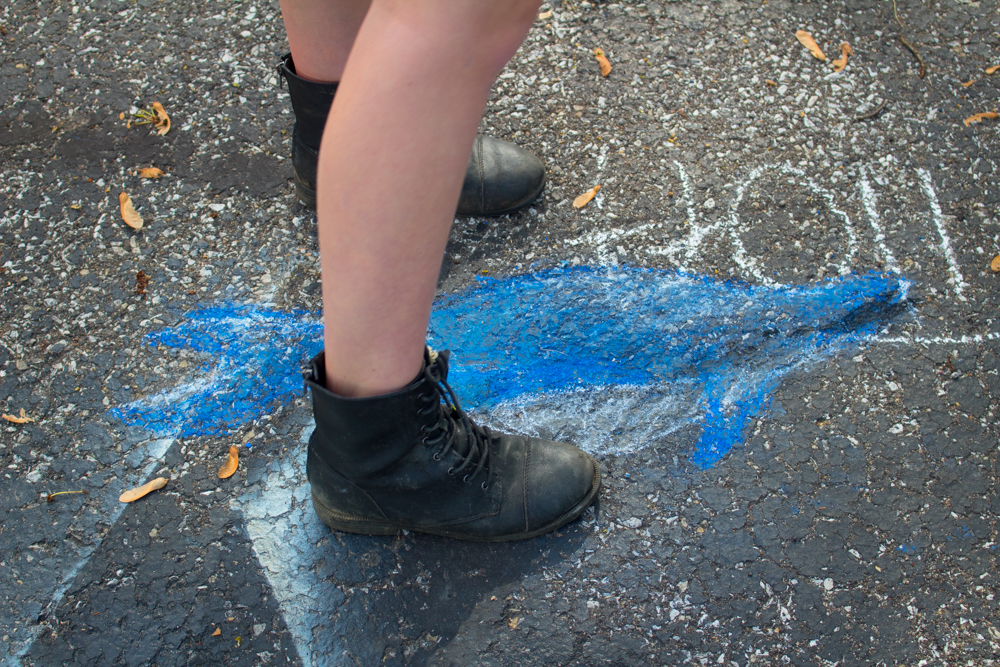
A. Polynesians
Here's how we carved our own petroglyphs the easy way!
This tiki mask project isn't super authentic, but the results are fairly similar to the kinds of statues that you see at heiau, in particular. This tapa cloth is also made from paper and not bark, but it's still a fun activity.
B. Hawaiian monarchy
Unfortunately, this subject was difficult to find ample resources for outside of Hawaii, although once we were there we really did find ourselves immersed in the history of Hawaii's monarchy and were able to explore some wonderful places important to the monarchy and see some beautiful treasures.
I printed out this large infographic of Hawaii's monarchs and had the children put it on the wall under our map for easy reference. I also tried to get the kids to watch this American Experience episode on Hawaii's last queen, but it was super dry and didn't hold their interest. Matt and I later watched it by ourselves, and it hardly held my interest, either, but I wanted the information so I muscled through.
We used these resources on the Hawaiian monarchy:
C. Pearl Harbor
We actually incorporated this lesson into our larger study of World War 2, so you'll want to add in your own pre- and post-Pearl Harbor context to this lesson.
I wanted the kids to understand the logistics of the attack, of course, but I also wanted them to be able to visualize it, because that's how they'll remember. Much of our study took place at the actual Valor in the Pacific National Park, where the kids earned Junior Ranger badges and we took at ferry out to the USS Arizona Memorial. Will, especially, also really loved the Pacific Aviation Museum, and I appreciated being able to see some of the actual aircraft models used at Pearl Harbor and Midway. Both of these places have excellent online presences, as well. The kids didn't enjoy Tora! Tora! Tora! enough to watch the entire thing, but they did watch the Pearl Harbor attack, and it's a really, really accurate version.
We used these further resources to study Hawaii's history. In particular, all three of us adored Under the Blood-Red Sun--we listened to it on audiobook in the car, and the entire family was riveted.
4. Biology, botany, and ecology of Hawaii
I had each of the kids spend a few school lessons looking up native Hawaiian plant or animal species and creating infographics about them using Piktochart. If kids are very interested in the subject, here's an entire lesson on Hawaii's endemic species, or a pdf board game about Hawaii's watershed.
The second time we studied Hawaii, we found ourselves interested in Captain Cook, here's a little more about him, and here's a Crash Course video about him:
B. Hawaiian monarchy
Unfortunately, this subject was difficult to find ample resources for outside of Hawaii, although once we were there we really did find ourselves immersed in the history of Hawaii's monarchy and were able to explore some wonderful places important to the monarchy and see some beautiful treasures.
I printed out this large infographic of Hawaii's monarchs and had the children put it on the wall under our map for easy reference. I also tried to get the kids to watch this American Experience episode on Hawaii's last queen, but it was super dry and didn't hold their interest. Matt and I later watched it by ourselves, and it hardly held my interest, either, but I wanted the information so I muscled through.
We used these resources on the Hawaiian monarchy:
C. Pearl Harbor
We actually incorporated this lesson into our larger study of World War 2, so you'll want to add in your own pre- and post-Pearl Harbor context to this lesson.
I wanted the kids to understand the logistics of the attack, of course, but I also wanted them to be able to visualize it, because that's how they'll remember. Much of our study took place at the actual Valor in the Pacific National Park, where the kids earned Junior Ranger badges and we took at ferry out to the USS Arizona Memorial. Will, especially, also really loved the Pacific Aviation Museum, and I appreciated being able to see some of the actual aircraft models used at Pearl Harbor and Midway. Both of these places have excellent online presences, as well. The kids didn't enjoy Tora! Tora! Tora! enough to watch the entire thing, but they did watch the Pearl Harbor attack, and it's a really, really accurate version.
We used these further resources to study Hawaii's history. In particular, all three of us adored Under the Blood-Red Sun--we listened to it on audiobook in the car, and the entire family was riveted.
4. Biology, botany, and ecology of Hawaii
For many kids, exploring the special plants and animals found in and around Hawaii is the most exciting part of this study. That exploration should go hand-in-hand with learning the importance of conservation.
One biology activity meets the Maui requirement for the Aloha fun patch.
A. ecology of Hawaii
The ecology of Hawaii is extremely important, extremely delicate and, in many places, extremely in danger.
One ecology activity meets the Moloka'i requirement for the Aloha fun patch.
To help the kids understand the importance and fragility of Hawaii's ecology, I used some of the curriculum materials from the Moanalua Gardens Foundations. It's geared to an elementary audience, but since it covers topics that are more familiar to that elementary audience than they would be to children outside of Hawaii, much of it still works even for older learners. In particular, we played Ecosystem Encounters--the kids loved it, and we learned SO much about feral pigs and happy-face spiders!
If you don't have time for an entire lesson plan or even a board game about feral pigs and happy-face spiders, this Ted-Ed video about invasive species is very informative:
I had each of the kids spend a few school lessons looking up native Hawaiian plant or animal species and creating infographics about them using Piktochart. If kids are very interested in the subject, here's an entire lesson on Hawaii's endemic species, or a pdf board game about Hawaii's watershed.
B. seals
I also had Will read this biography of the monk seal KP2. I thought that it might be too dry for her, but she actually loved it, and when we looked up KP2's home, the Waikiki Aquarium, we saw that there's a webcam of him! We still watch KP2 sometimes!
C. whales
Whales are always fun and fascinating to study. To make the kids' fact-finding projects about whales more interesting, we measured their lengths out and drew them in chalk:
Whales are always fun and fascinating to study. To make the kids' fact-finding projects about whales more interesting, we measured their lengths out and drew them in chalk:

D. sharks
One summer, the kids and I fell down a rabbit hole and spent three months studying sharks. It was AMAZING!
Fun stuff
Here are some fun, non-educational resources that have Hawaii themes:
My favorite thing about a Hawaii study is that the subject is so rich that it adapts itself to all levels of learners and a wide variety of interests. Kids who love animals have so much to study in Hawaii! Kids who love volcanoes, too! And kids who love history, who love music and dance, who love storytelling... a study of Hawaii is a great way to engage any learner.
P.S. Want to know more about our adventures in learning, and the resources that we use to accomplish them? Check out my Craft Knife Facebook page!


